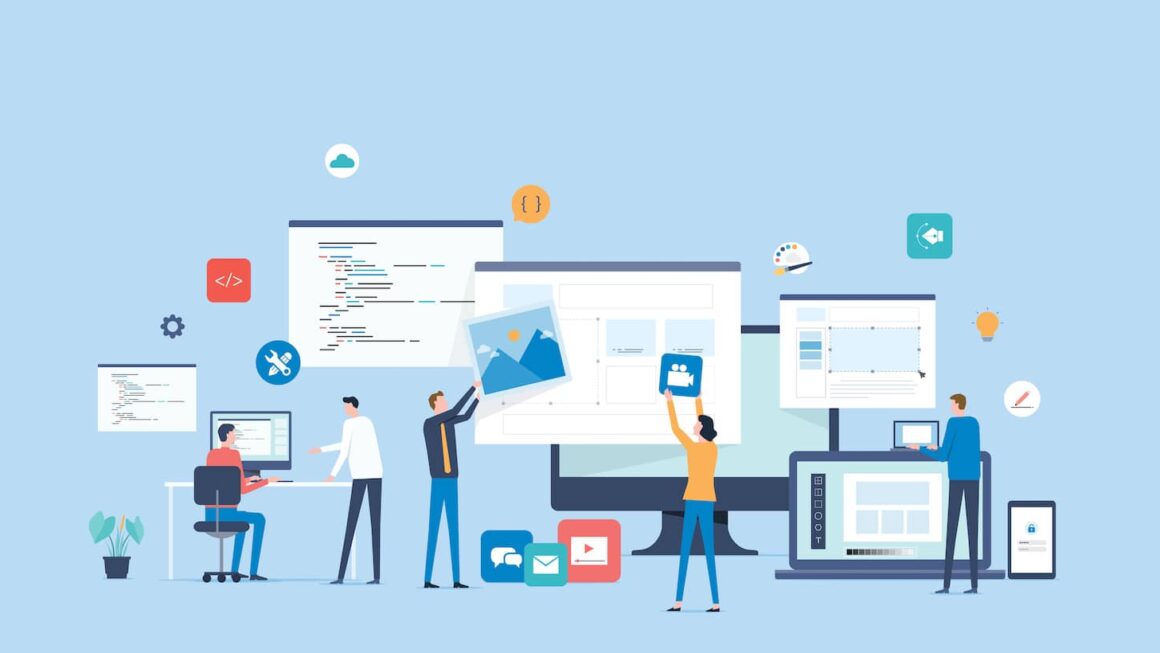In today’s digital age, web applications have become an integral part of our daily lives. From social media platforms to online banking systems and e-commerce websites, web applications play a vital role in connecting users and businesses worldwide. With the rapid advancement of technology, the field of web application development has witnessed significant growth, enabling developers to create highly interactive and dynamic applications that deliver exceptional user experiences.
What is Web Application Development?
Web application development refers to the process of creating software applications that run on web browsers. Unlike traditional desktop applications, web applications are accessible through the internet, eliminating the need for installation or compatibility issues. They offer the advantage of being platform-independent, allowing users to access the application from any device with a web browser and an internet connection.
The Development Process:
- Planning and Requirement Gathering: Every successful web application begins with a clear vision and thorough planning. During this phase, developers work closely with clients to understand their business goals, target audience, and specific requirements.
- Design and User Experience: The design phase focuses on creating a visually appealing and user-friendly interface. Developers utilize various tools, such as wireframing and prototyping, to outline the application’s structure and functionalities. User experience (UX) plays a critical role in this phase to ensure intuitive navigation and seamless interactions.
- Front-End Development: Front-end development involves the implementation of the user interface design. Developers use web technologies like HTML, CSS, and JavaScript to build the application’s visual components, ensuring responsiveness and cross-browser compatibility.
- Back-End Development: Back-end development is responsible for the server-side functionality and data management of a web application. It involves programming languages like Python, Ruby, PHP, or JavaScript (Node.js) to handle database operations, server configuration, and business logic.
- Testing and Quality Assurance: Rigorous testing is crucial to identify and rectify any issues or bugs in the web application. Quality assurance teams perform functional testing, compatibility testing, performance testing, and security testing to ensure a robust and reliable product.
- Deployment and Maintenance: Once the development and testing phases are complete, the web application is deployed on a server or cloud infrastructure, making it accessible to users. Ongoing maintenance and updates are necessary to address any emerging issues, enhance performance, and introduce new features based on user feedback.
Also Read This: Golden Era Shaping the Future with Buy-to-Let Properties in dubai
Frameworks and Technologies:
Web application development is supported by a wide range of frameworks and technologies that streamline the development process and enable developers to build robust and scalable applications. Some popular frameworks include:
- React.js: A JavaScript library for building user interfaces, React.js allows developers to create dynamic and reusable components, making it efficient for building complex web applications.
- Angular: Developed by Google, Angular is a powerful framework for building large-scale applications. It provides a comprehensive toolkit for managing dependencies, handling data binding, and creating interactive user interfaces.
- Ruby on Rails: Known for its simplicity and convention-over-configuration principle, Ruby on Rails is a popular framework that facilitates rapid development by emphasizing code readability and reducing repetitive tasks.
- Django: Built on Python, Django is a high-level web framework that prioritizes security and scalability. It provides a robust set of tools and libraries for handling common web development tasks, such as URL routing, database management, and user authentication.
Also Read: Web3 development company
The Future of Web Application Development:
As technology continues to evolve, web application development is expected to undergo further advancements and innovations. Here are some trends that are shaping the future of web application development:
- Progressive Web Apps (PWAs): PWAs combine the best features of web and mobile applications, offering users an app-like experience on the web. They are fast, responsive, and can work offline, providing seamless user experiences across different devices.
- Artificial Intelligence (AI)












